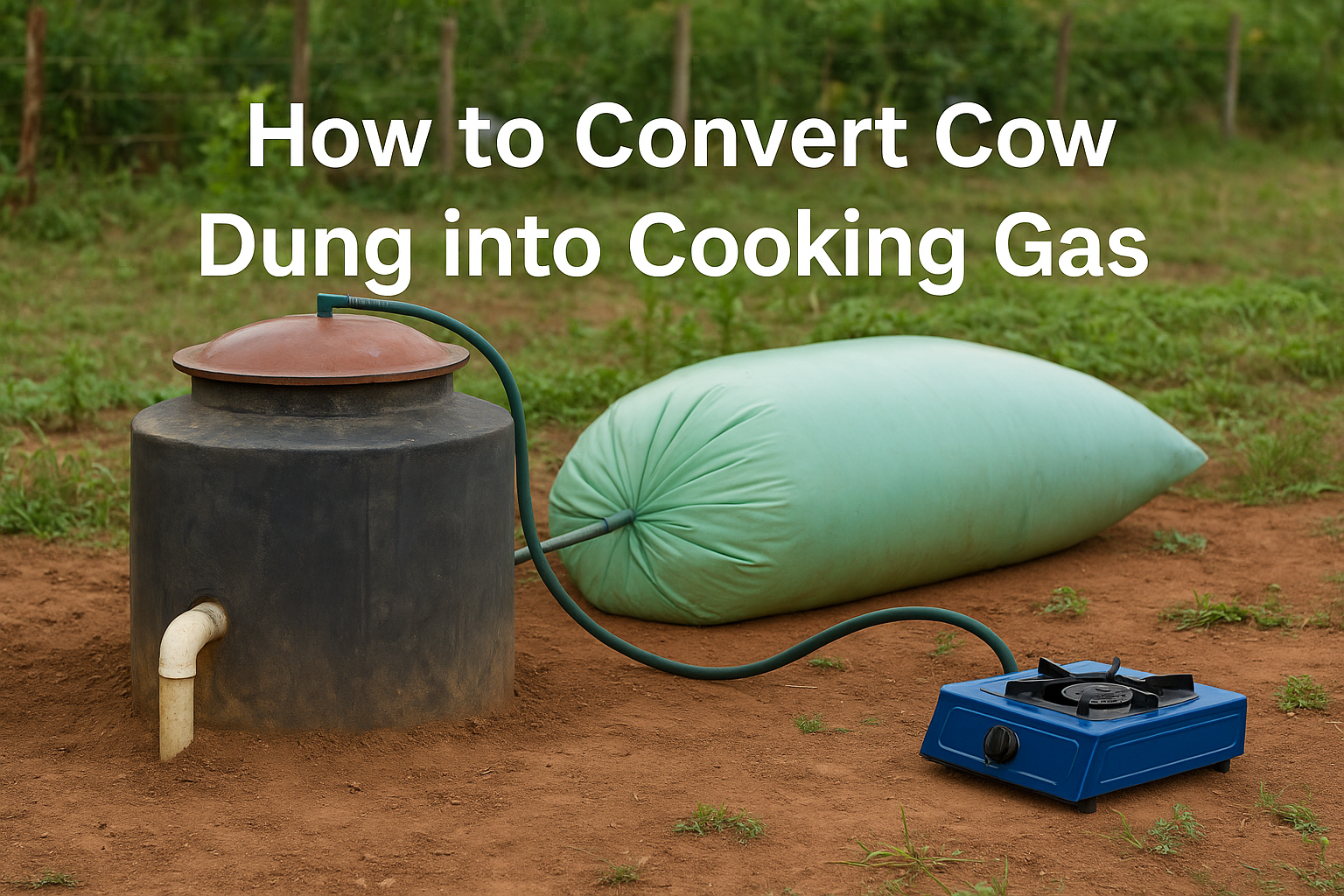🔍 What Is Biogas?
Biogas is a clean-burning, renewable fuel produced by the breakdown of organic matter (like cow dung) in the absence of oxygen—a process known as anaerobic digestion. The primary components of biogas are:
- Methane (CH₄) – 50-75% (flammable part)
- Carbon dioxide (CO₂) – 25-50%
- Small amounts of hydrogen sulfide and water vapor
🧪 How Does Cow Dung Produce Cooking Gas?
Cow dung contains organic material and anaerobic bacteria that thrive in oxygen-free environments. When the dung is placed in a sealed biogas digester and mixed with water, these bacteria break down the waste and emit methane gas, which can be captured and used as cooking fuel.
🧰 Materials Needed
To build a simple domestic biogas plant, you’ll need:
- Cow Dung: About 25–30 kg of fresh dung daily
- Water: Mixed in a 1:1 ratio with dung to create slurry
- Biogas Digester Tank: Concrete, brick, or plastic tank (e.g., 1000-liter drum)
- Gas Storage: Dome, floating drum, or balloon to collect gas
- Inlet and Outlet Pipes: For feeding and discharging slurry
- Gas Pipe and Stove: PVC pipe and a biogas-compatible stove
🏗️ Step-by-Step Process to Convert Cow Dung into Cooking Gas
Step 1: Choose a Location
Pick a warm, shaded, and well-ventilated area close to the kitchen or cattle shed.
Step 2: Construct or Buy a Biogas Digester
Install an airtight digester tank underground or use a ready-made plastic/flexible digester. Common types include:
- Fixed-dome digester
- Floating drum digester
- Plastic/flexible bag digester
Step 3: Prepare the Slurry
Mix equal parts of cow dung and water to form a slurry. For example, 30 kg of dung + 30 liters of water.
Step 4: Feed the Digester
Pour the slurry into the digester daily. Bacteria will start producing methane within 1–3 weeks.
Step 5: Collect the Gas
Gas collects in the upper dome or balloon and is pushed through the pipe as more gas forms.
Step 6: Use the Gas for Cooking
Connect the gas outlet to your stove using sealed PVC piping. You’re now ready to cook using clean, renewable energy.
✅ Benefits of Biogas from Cow Dung
- Eco-friendly: Reduces greenhouse gas emissions
- Cost-effective: Cuts down on charcoal, firewood, or LPG costs
- Waste management: Hygienically manages cattle waste
- Organic fertilizer: Slurry by-product is an excellent fertilizer
⚠️ Safety Tips
- Ensure all gas pipes and tanks are airtight to prevent leakage
- Use filters to remove hydrogen sulfide (H₂S)
- Install flame arresters to prevent backfire
- Keep the system away from open flames or heat sources
📈 Can It Work at a Larger Scale?
Yes. Community biogas plants are used in schools, farms, and rural communities in countries like India, Nigeria, and Kenya. These systems can supply energy to multiple homes and produce organic fertilizer for sale.
🌿 Final Thoughts
Converting cow dung into cooking gas is not just sustainable—it’s smart. With basic materials and consistent maintenance, you can generate your own fuel and reduce energy costs. If you’re a farmer or eco-enthusiast, consider building your own small-scale biogas system today.


